RECOIL OFFGRID Preparation Medicinal Herb Garden: Grow Your Own Backyard Pharmacy
In This Article
Medicine is one of the most substantial problems the family medic faces if a long-term disaster knocks them off the grid. Even with a decent stockpile accumulated over time, the commercially produced drugs will eventually be expended, leaving even the most skilled provider without some very important tools to help deal with injuries and illnesses. Planting your own medicinal herb garden is the best way to provide alternatives to modern medicines in austere settings. Until pharmaceuticals were produced in factories, people had to grow their own medicine. This practice was a natural part of our heritage and provided needed remedies for many medical issues. A community often had a person who served as an herbalist and supervised the cultivation and processing.
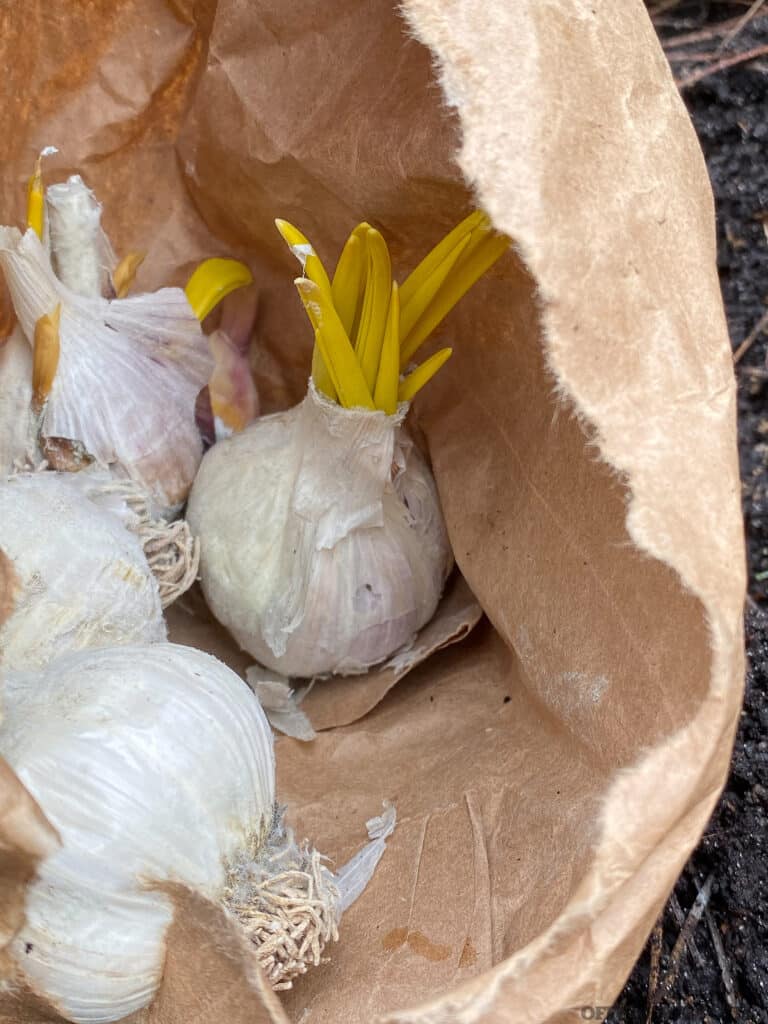
Above: Garlic has antibacterial and antiviral properties.
Growing your own medicinal garden is both rewarding and beneficial. The gardening learning curve can be steep, so don’t wait until the situation becomes critical to get started. Obtain some gardening supplies, assess weather and soil conditions, and figure out what medicinal plants might exist in your own backyard.
This is a general overview and not a comprehensive guide to medicinal gardening. Seek professional medical advice and study potential side-effects carefully before attempting to treat any injury or illness with natural remedies.
The medicinal plants you select should match the climate as much as possible. For some, that means that the herbs must survive the winter; for others, the summer heat or dry periods. The Department of Agriculture publishes “Plant Hardiness” maps: These are divided into 10-degee Fahrenheit zones and serve as the standard by which gardeners and growers can determine which plants will do well at a particular location.
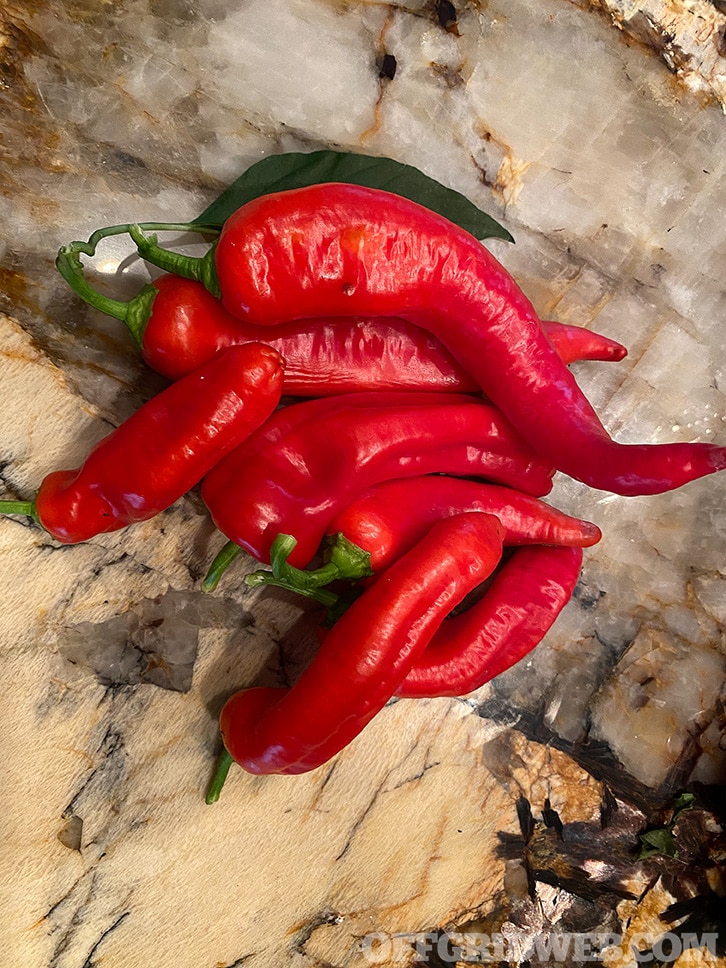
Above: Cayenne pepper can be used in cooking or as a medicine.
Part of the decision-making process is whether to plant annuals or perennials. This may confuse the beginning medicinal gardener. Given that annual is defined in the dictionary as “occurring every year or once a year,” some plant them, expecting new plants every spring. Despite the dictionary entry, when applied to plants, “annual” means completing the entire life cycle in one growing season. Perennial herbs include lavender, mint, thyme, sage, and rosemary. Examples of annuals include basil, dill, and fennel.
Once you have identified the plants with medicinal benefits that match up with your zone (and your likely needs), select a well-drained, sunny area with healthy soil. Although some herbs grow well in shade, most plants need at least six to eight hours of full sun for proper growth and development. Potting is appropriate for medicinal plants that might need to be taken inside during a cold winter. Water should be provided on a regular basis to allow the soil to stay moist, but not muddy or waterlogged.
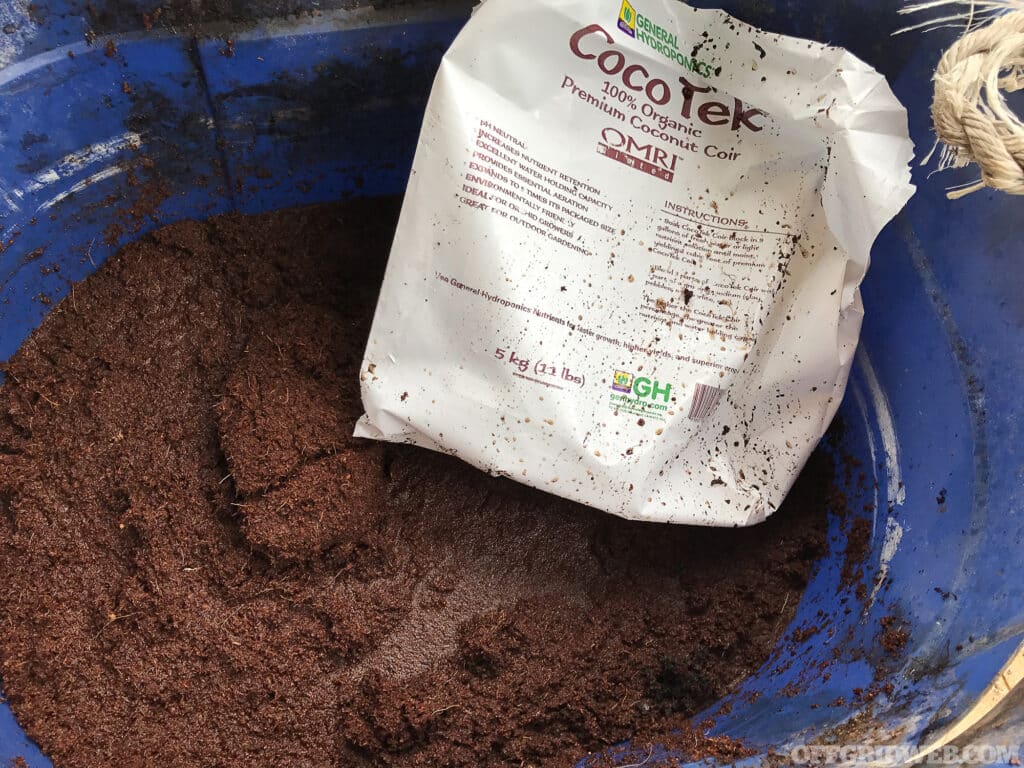
Above: Coconut coir can absorb 10 times its weight in water.
Soil in many areas must often be amended for the best results. For a well-draining soil, mix potting soil with perlite and peat moss or coconut coir. Perlite is a white granular material that’s lightweight, sterile, and easy to handle. It’s neither alkaline nor acidic. Perlite absorbs water, but it also improves drainage. Coconut coir is the material between the outer shell of the coconut and the inner shell. You might have seen it as the liner for many hanging flower baskets. It’s inexpensive, reusable, available in compressed bales, and holds up to 10 times its weight in water. It helps provide good aeration when mixed with water and native soil. Plus, like perlite, it’s pH neutral. Coconut coir also helps resist a number of insects and diseases. On top of your mix, place some mulch or pine straw to hold in moisture and reduce weeds.
Composting is an excellent way to enrich your soil. Compost improves the soil by helping it retain more moisture and allow for more air flow. It also provides nutrients for plant growth. Gardeners make compost with grass clippings, leaves, shredded paper, kitchen waste like uncooked vegetable and fruit peels, and other organic matter.
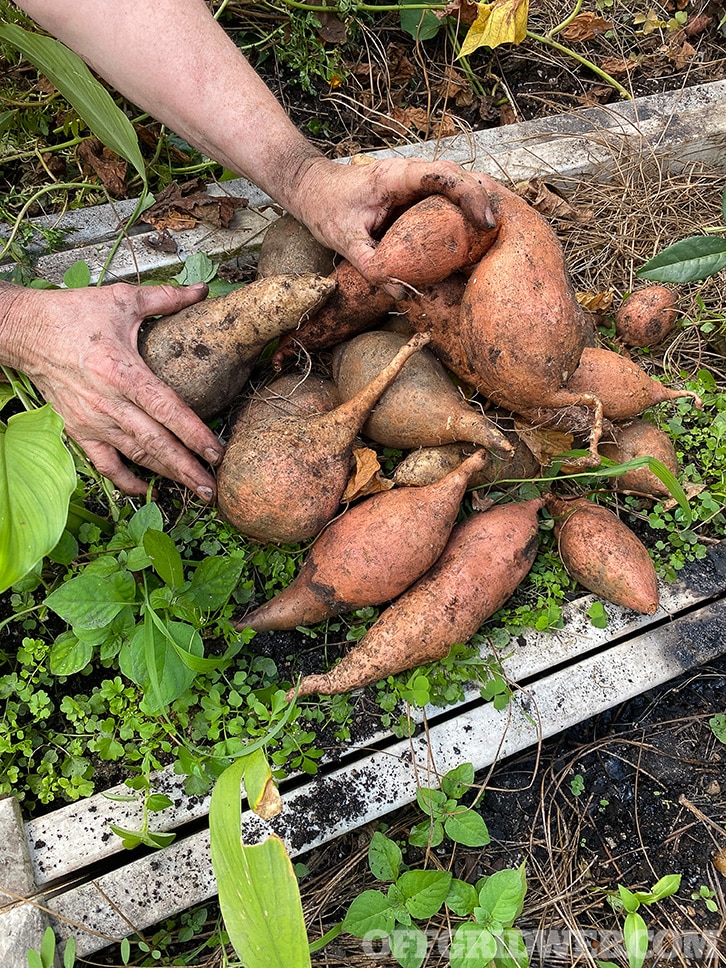
Above: Root crops can be harvested with hoes or trowels.
You’ll need a large container with a lid; some newer commercial composters come in “tumblers” that allow you to periodically turn the compost for more oxygen. Then, put the compost materials in and cover with soil and/or herbivore manure (be aware that dog, cat, or pig poop has a higher chance of containing parasites). Cow manure has the most nutrients. Microbes slowly degrade the container contents into nutrient-rich compost.
Adding some red worms will speed up the process. The worms will eat the plant matter and poop “worm castings.” Worm castings are organic matter that contains a mixture of bacteria, enzymes, remnants of plant matter, and other substances. They help prevent the soil from becoming too acidic or too alkaline.
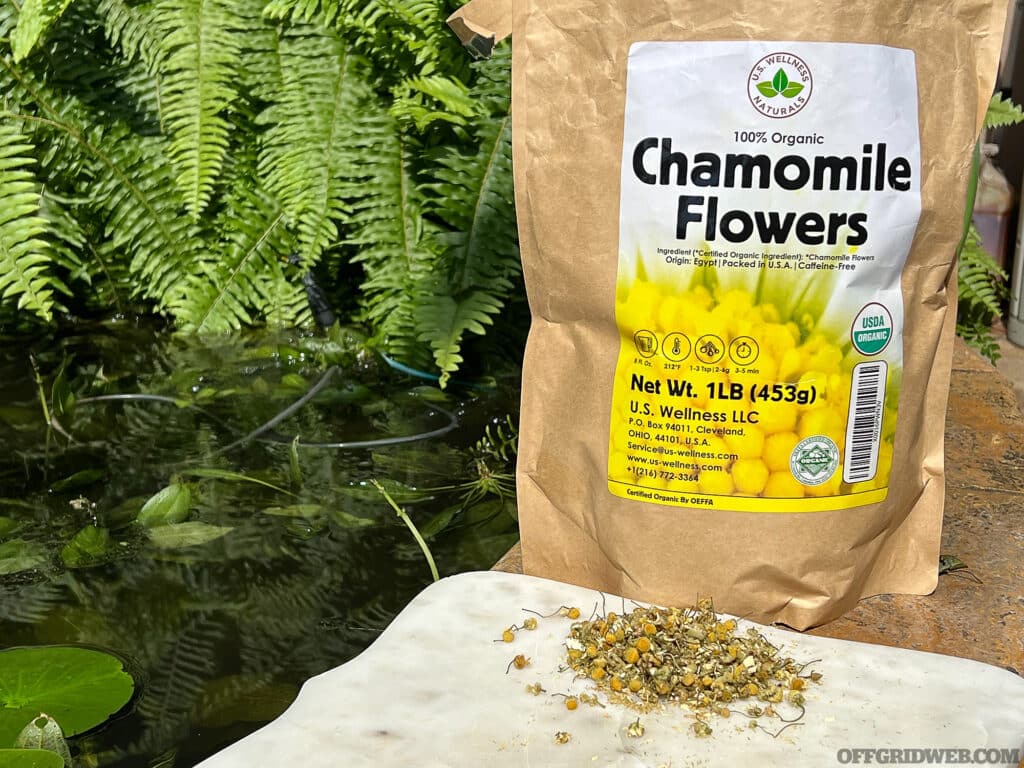
Above: Chamomile flowers are used in teas as a sleep aid and to relieve muscle tension.
For organic pest and disease control, consider putting together a soapy mixture of one tablespoon of neem oil, one teaspoon of Dr. Bronner’s lavender, peppermint Castile soap, and perhaps a few drops of tea tree essential oil in about four to eight cups of water. The combination makes a great natural disease and pest control. As a preventative, spray foliage in the late afternoon every five to seven days or after a heavy rain. Shorter intervals are acceptable if current diseases or pests are being treated.
You may be able to grow warmer climate plants by protecting them from the cold with greenhouses or using row covers. This will expand the range of medicinal plants you may choose to grow either in pots or around your homestead.
Now you can sow your seeds. Different plant seeds are placed at different depths of the soil. Usually, it’s better to plant too shallow than too deep. Some, like certain lettuces, aren’t buried at all. A good general strategy is to plant seeds at a depth which equals two to three times their width. A layer of mulch can help maintain even moisture levels in dry conditions. Make sure to read the seed packet for specifics.
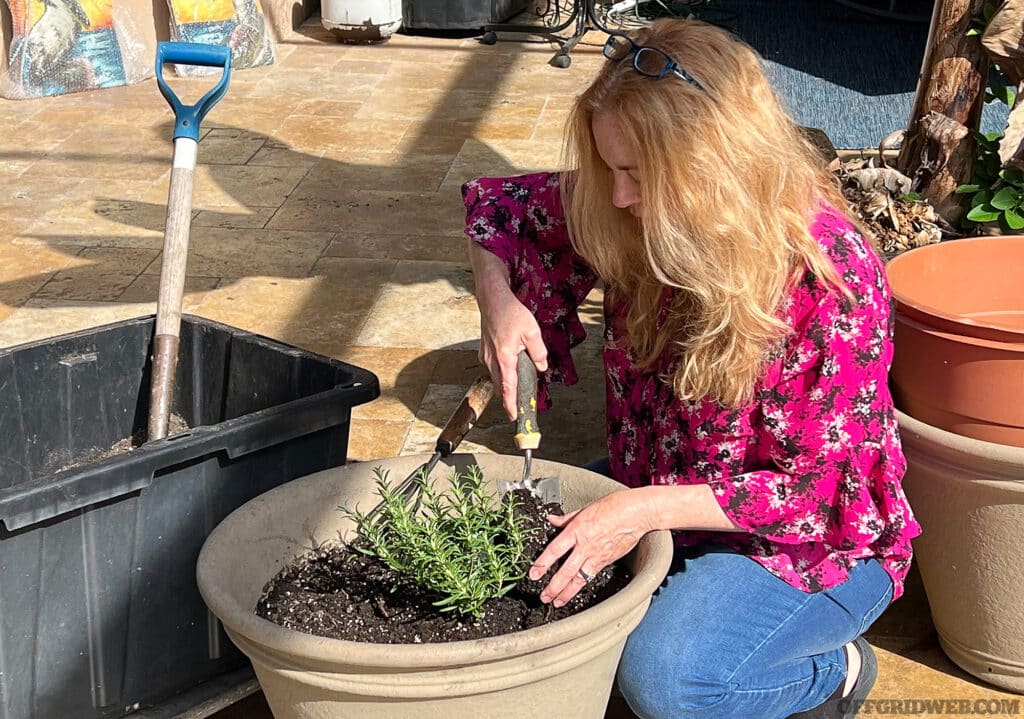
Above: Herbs like rosemary are simple to plant and grow.
Some herbs like mint and comfrey rarely produce viable seed, so “cuttings” are another option. A cutting is a section of plant originating from stem, leaf, or root that’s capable of developing into a new plant. This strategy involves placing the section in water or some other growing medium until roots develop. You’ll need sharp scissors or a razor blade, a healthy mother plant, a soilless potting mix, some rooting hormone, and small (4 inch or so) containers. Soilless mixes like perlite, vermiculite, sand, and coconut coir are used because they have less microbes that inhibit root growth. Water can be used instead of a mix, although planting afterward seems less successful than with mixes.
Cuttings taken from new, green, non-woody stems make for easier rooting. Look for a stem with a bump somewhere near a leaf attachment. This is the area from which new roots will emerge. Use clean scissors or a razor blade dipped in alcohol and cut at a 45-degree angle just below the leaf attachment, sometimes called a “node.” The cutting should be a few inches long and contain a leaf or two plus the node. Although a leaf is necessary for photosynthesis, too many or a leaf that’s too large will take away energy from root creation. If the leaf is large, cut off a portion from the end.
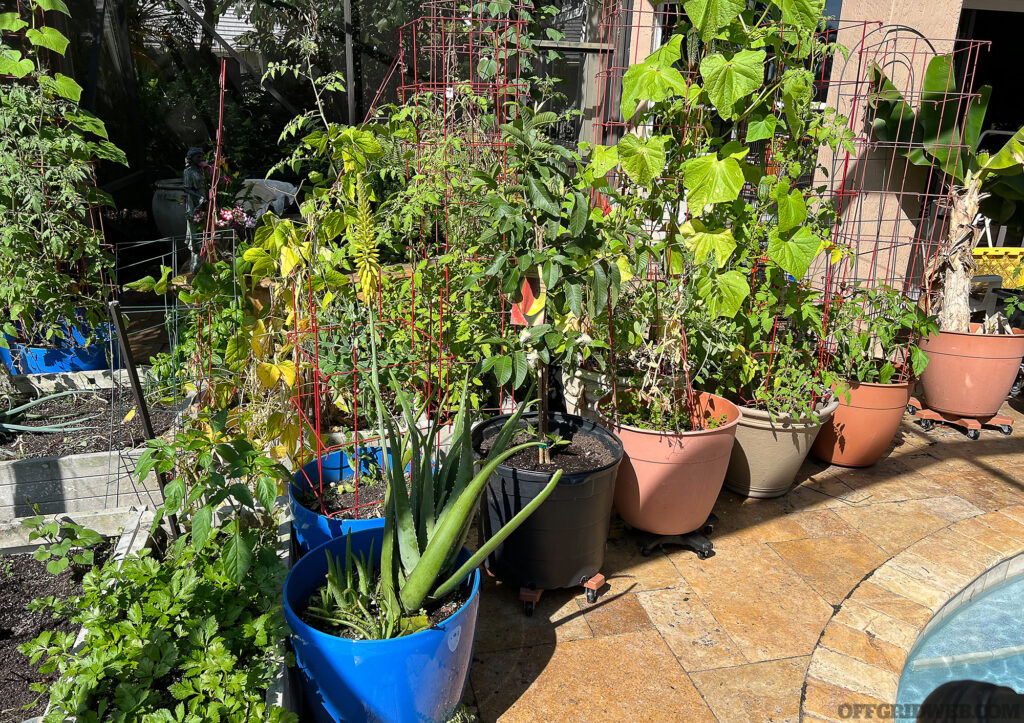
Above: Herbs do just fine in pots and containers.
Your chances of success might be higher with rooting hormone. Rooting hormone stimulates the formation of new roots. Dip the node into some water and then into the rooting hormone. Tap off excess; too much actually decreases the success rate. Use a stick to make a hole slightly wider than the cutting. This will prevent rooting hormone from being knocked off the plant. Firm the soil around the cutting to stabilize it.
Place the whole thing into a plastic bag. This keeps the humidity high and holds in heat. Air is important, however, so don’t seal the bag completely. Keep in a warm area with a little light, but full sunlight isn’t necessary until new leaves form. Watch for two to three weeks, discarding any failed rootings. After this, a gentle tug on the plant should show some resistance, a sign that rooting has occurred. At this point, you have a new living plant.
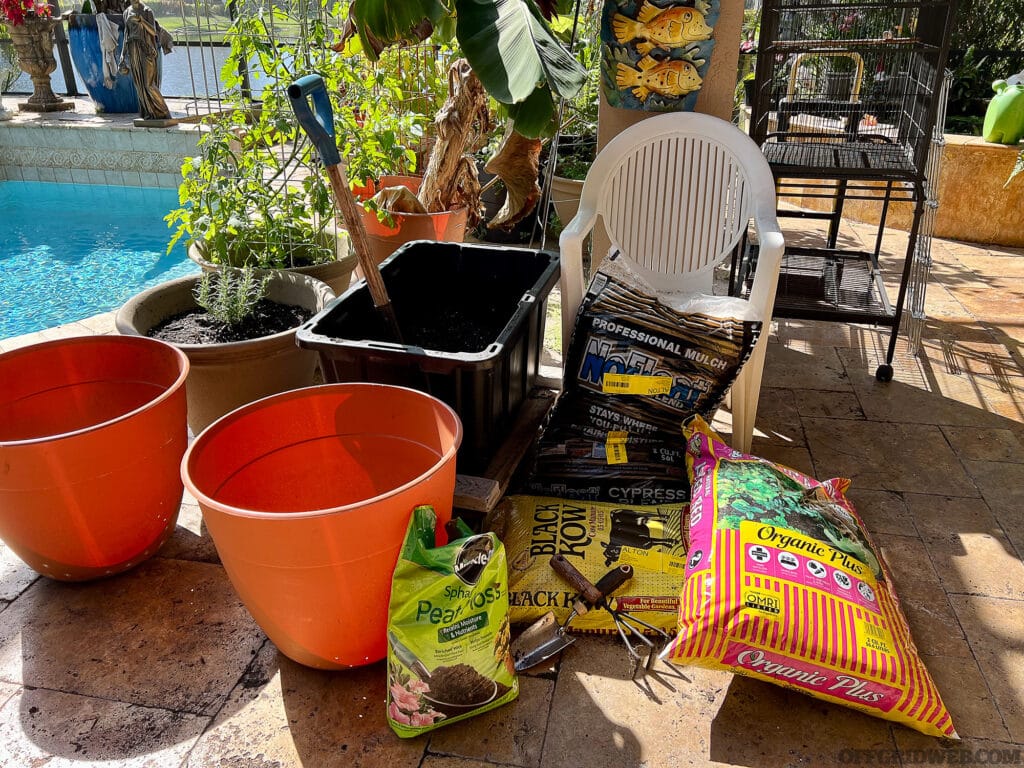
Above: The right soil mix and tools lead to a successful herb garden.
Here’s a list of medicinal plants you may consider growing, as well as their benefits and the most commonly used part of the plant:
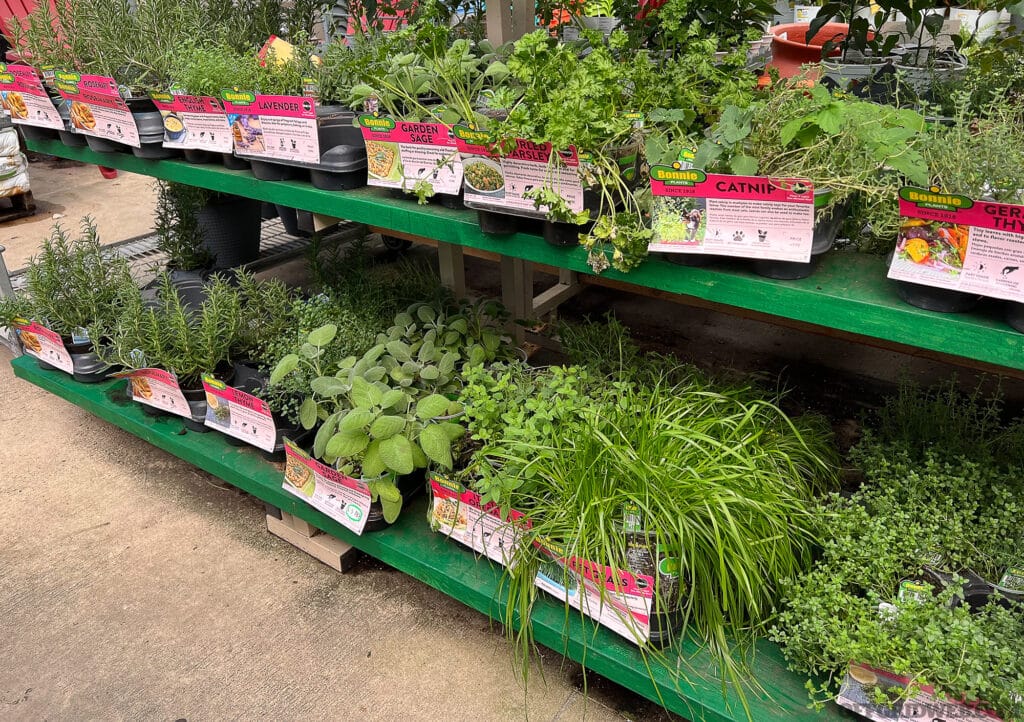
Above: Different herbs fail or succeed depending on plant hardiness.
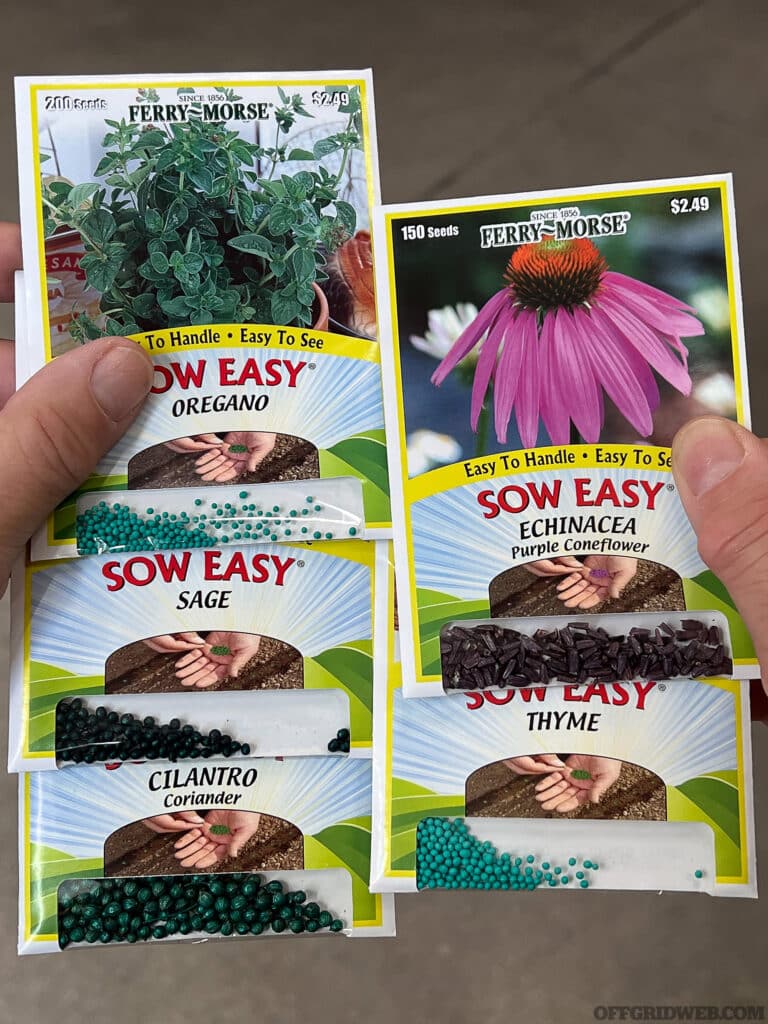
Above: Pick the herbs most likely to thrive in your area.
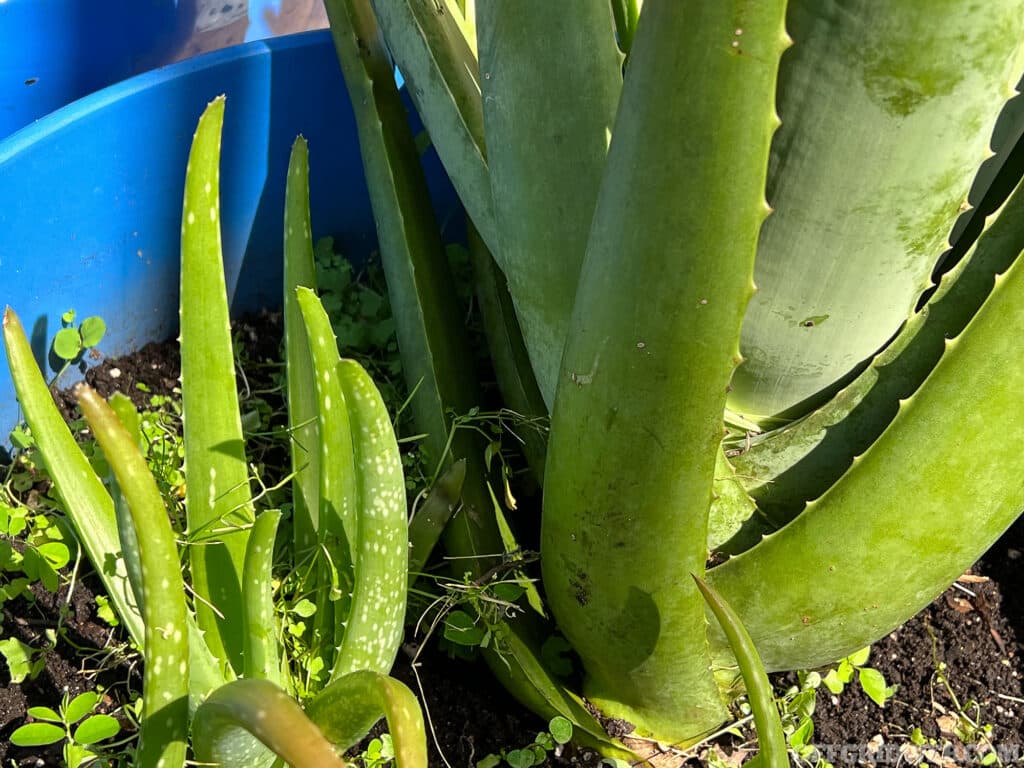
Above: Burn remedy aloe vera is most easily propagated by separating out its “pups.”
Each plant is different, and when to harvest even depends on the part of the plant involved. Flowers are harvested when they open but before they are pollinated. In general, flowers should be harvested on dry days before the intense heat of the sun removes the fragrance from the petals, but after the morning dew has dried.
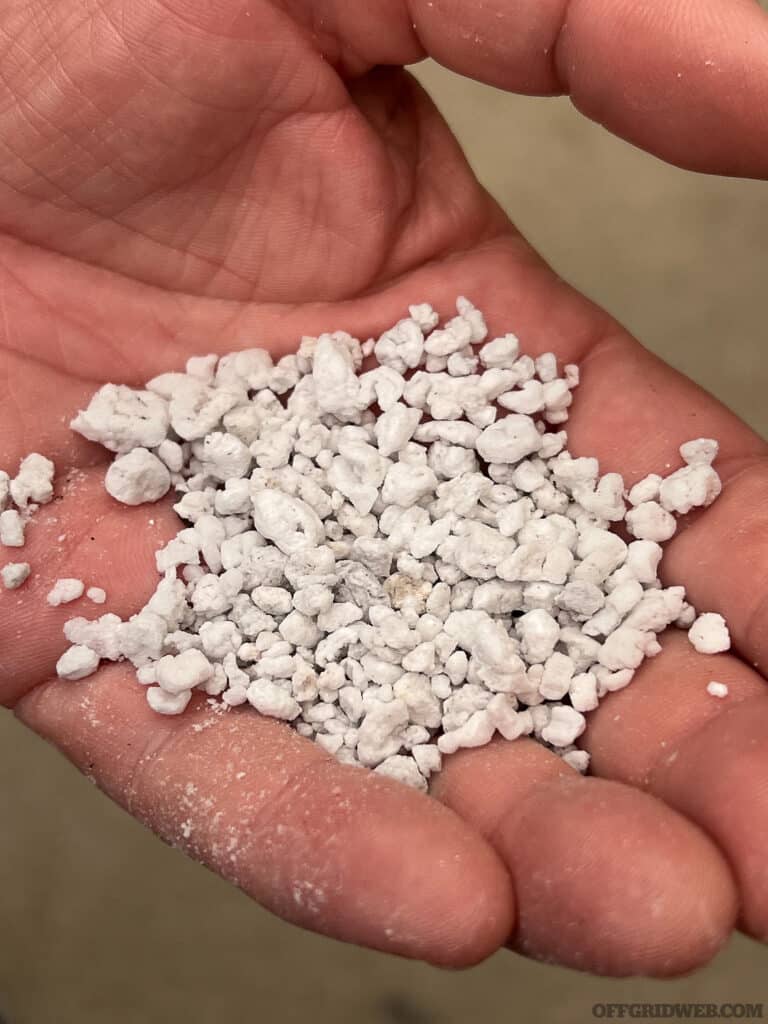
Above: Perlite improves soil aeration and drainage.
It’s preferable to take just the amount of plant material you’re ready to process for use or storage. Otherwise, rapid deterioration could occur and degrade the medicinal benefit of the herbs. Herbs can be preserved by air- or oven-drying, and then stored in a sterile dark glass jar with airtight lids. For the longest shelf life of about 12 months, make sure conditions are cool, dry, and dark. Vacuum sealing the jar helps.
Just like any off-grid activity, the right tools make life easier and increase your chances of success. Consider these items:
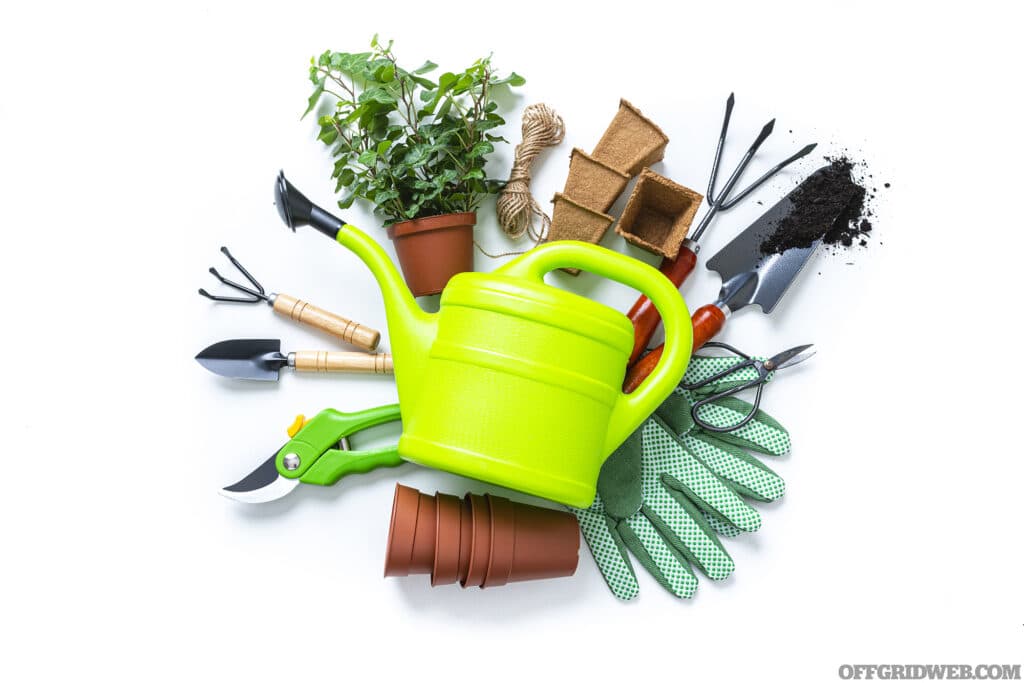
Many herbs bestow multiple benefits to the gardener. Take the herb known as thyme, a low-growing herb often used in cooking. In addition, it:
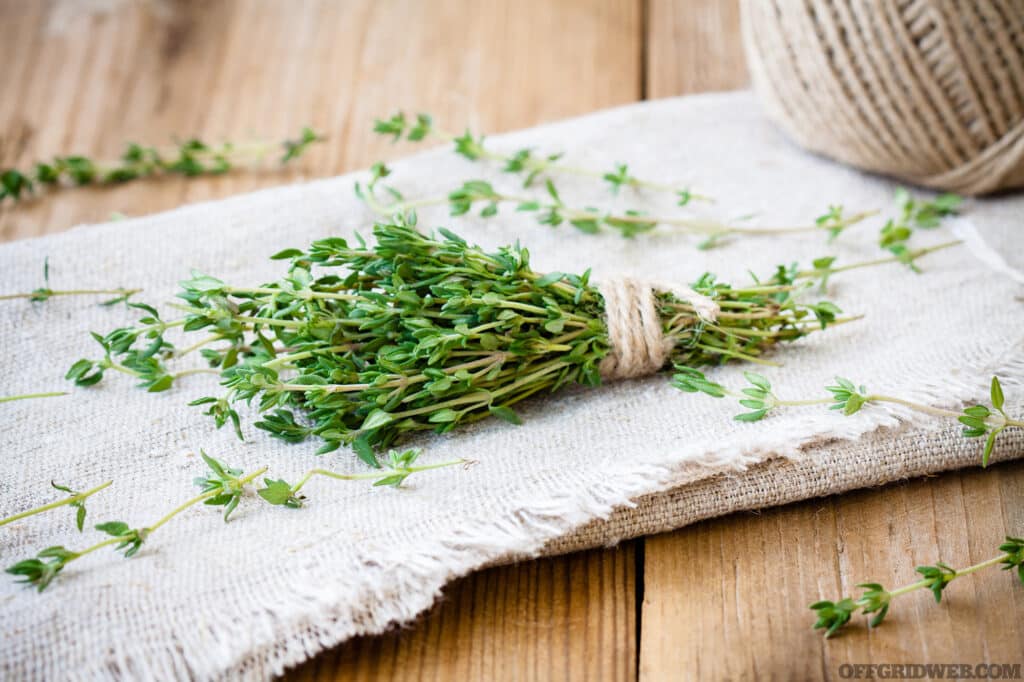
Of course, the strength of a medicinal herb depends on climate, soil conditions, and other factors. Like vintages of wine, each year may yield higher or lower quality of effect. In addition, many have risks if used in pregnancy or in those with certain medical conditions, especially those requiring blood-thinners.
There’s a lot more to putting together an effective medicinal garden when the medications run out. Diligently research the data on each herb and decide which will do well in your area and meet your medical needs. Don’t delay: The last thing you want is to go through the gardening learning curve after you’re thrown off the grid.
Joe Alton, MD, is a physician, medical preparedness advocate, and New York Times bestselling author of The Survival Medicine Handbook: The Essential Guide for When Help Is Not On The Way, now in its 700-page 4th edition. He is also an outdoor enthusiast and member of The Wilderness Medical Society. His website at doomandbloom.net has over 1,300 articles, podcasts, and videos on medical preparedness as well as an entire line of quality medical kits designed by the author and packed in the United States.
 STAY SAFE: Download a Free copy of the OFFGRID Outbreak Issue
STAY SAFE: Download a Free copy of the OFFGRID Outbreak Issue
No Comments